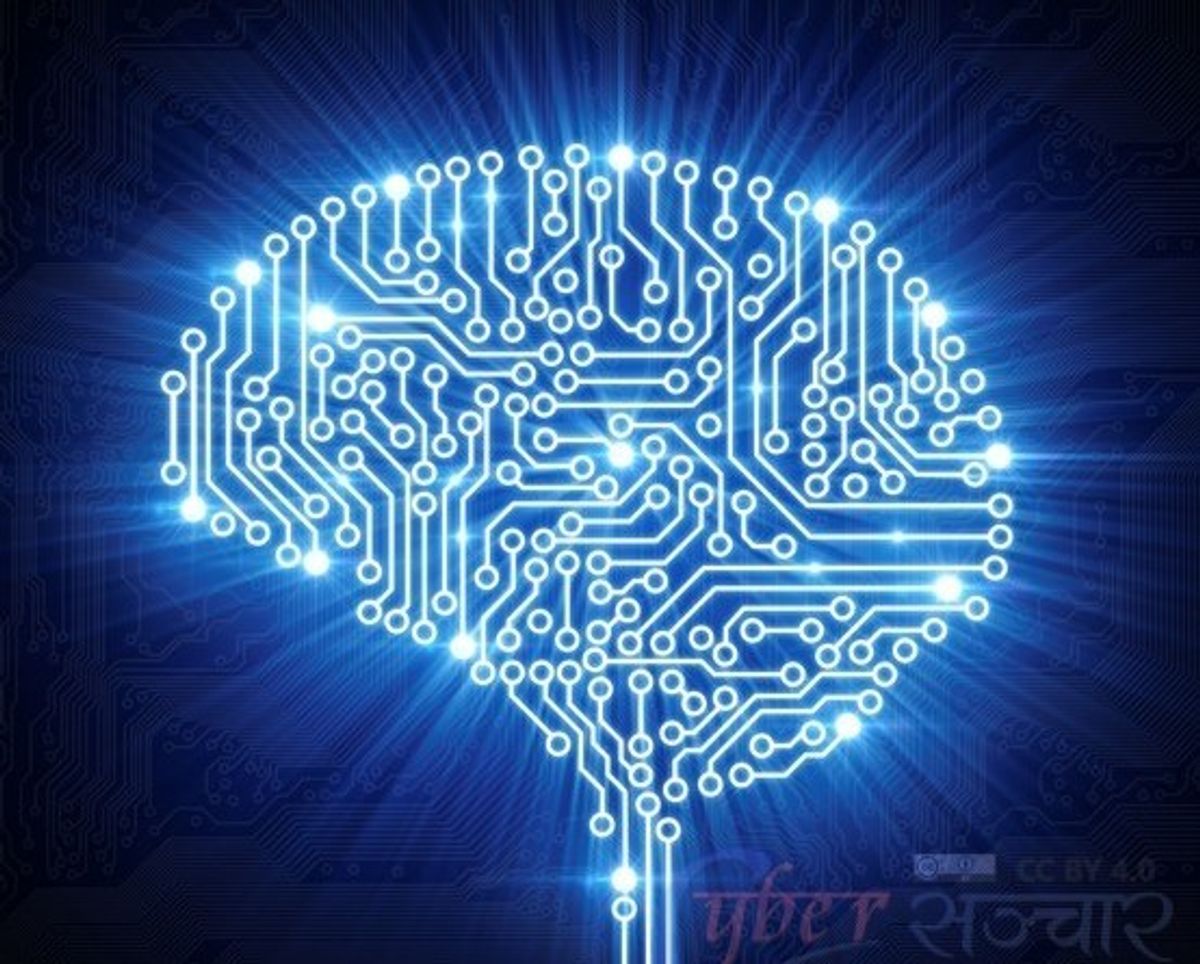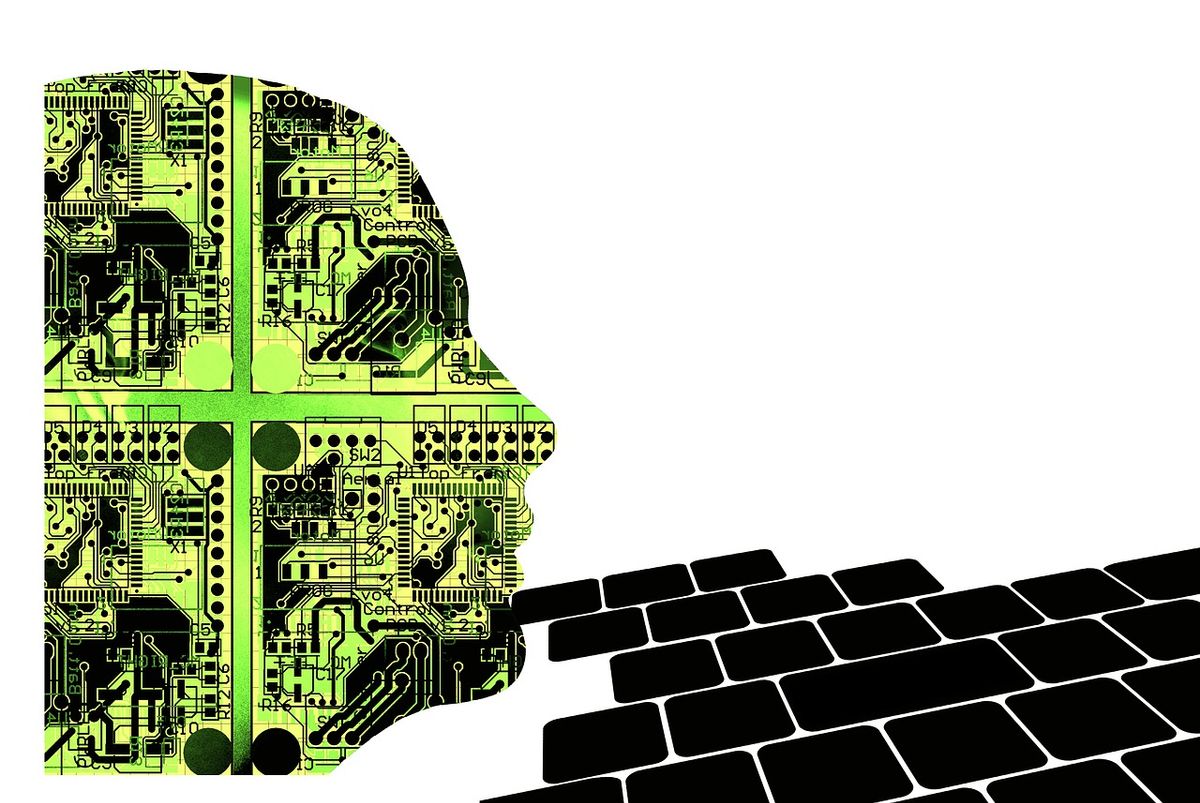In today’s rapidly evolving digital ecosystem, Artificial Intelligence (AI) has become a ubiquitous force, shaping how we interact with technology on a daily basis. From simple voice commands to complex decision-making processes, AI has transcended the realm of science fiction to become a practical and integral part of our personal and professional lives. This article delves deep into the intricacies of AI, offering a comprehensive understanding of its fundamentals, workings, applications, societal impact, and how to navigate its landscape.
Key Takeaways
- AI is a multidisciplinary field that combines vast amounts of data with intelligent algorithms, allowing machines to learn and act with human-like reasoning.
- The evolution of AI, from Turing’s pioneering work to current applications, reflects significant technological advancements and the integration of AI into various sectors.
- AI’s role in businesses and healthcare illustrates its potential to enhance operational efficiency and revolutionize services, driving data-driven decisions and personalized experiences.
- Ethical considerations and the future of employment are critical discussions as AI becomes more prevalent, highlighting the need for responsible development and adaptation.
- Staying informed about AI and its various types is essential for leveraging its benefits, necessitating AI literacy in an increasingly AI-driven world.
The Fundamentals of Artificial Intelligence

Defining AI: More Than Just Algorithms
Artificial intelligence (AI) is often envisioned as the realm of sentient robots and futuristic technologies, but its reality is far more grounded and pervasive in our daily lives. AI is a machine’s ability to perform cognitive functions we usually associate with human minds, such as learning, problem-solving, and pattern recognition. This capability extends beyond static rules, enabling machines to adapt and improve over time.
At its essence, AI involves the combination of vast amounts of digital data with intelligent algorithms. These algorithms empower machines to ‘learn’ by analyzing data and acting based on logical reasoning, in ways that mimic human behavior. The process is not about creating robots with independent thoughts but about crafting systems that can learn and enhance their performance at specific tasks.
AI’s development has been a multidisciplinary journey, incorporating insights from computer science, mathematics, psychology, and more. This convergence has led to a variety of AI architectures, from rule-based systems to advanced neural networks and deep learning models. Each approach offers different capabilities, and often, a single task can be tackled by multiple AI methods.
The Evolution of AI: From Turing to Today
The journey of artificial intelligence (AI) is a tale of innovation and evolution. From the foundational work of Alan Turing, who laid the groundwork for what AI could become, to the sophisticated systems of today, AI has undergone a remarkable transformation. Turing’s famous imitation game, or Turing Test, was a pivotal moment in conceptualizing the potential of machines to simulate human intelligence.
The timeline of AI’s evolution is marked by significant milestones:
- 1950s: Theoretical foundations laid by Turing and others.
- 1960s-70s: Early AI research and the development of simple neural networks.
- 1980s: The rise of expert systems and the renaissance of neural networks.
- 1990s: The emergence of machine learning as a dominant approach.
- 2000s: Big data and advanced algorithms lead to breakthroughs in AI capabilities.
- 2010s-present: AI becomes integrated into everyday technology, with advancements in deep learning and natural language processing.
The future of AI is not a fixed point but a continuous process of development and adaptation. With each passing year, AI becomes more ingrained in our lives, promising to solve some of humanity’s most pressing challenges while also raising new questions about its role in society.
Understanding AI’s Multidisciplinary Nature
Artificial Intelligence (AI) is not a standalone discipline; rather, it is a convergence of various fields that synergize to create intelligent systems. AI’s operations are based on the combination of vast amounts of digital data and intelligent algorithms, allowing machines to ‘learn’ and make decisions in a human-like manner.
The multidisciplinary nature of AI encompasses areas such as:
- Computer Science and Engineering: For building the AI algorithms and systems.
- Mathematics and Statistics: To understand data patterns and predictions.
- Cognitive Science: Providing insights into human-like learning and decision-making.
- Philosophy: Offering ethical frameworks and considerations.
- Linguistics: For natural language processing and communication.
The essence of AI lies in its ability to autonomously improve based on experiences and data, which is a testament to its multidisciplinary foundation. This improvement is not limited to Machine Learning-based solutions but also includes other architectures like rule-based systems and Generative AI.
Understanding the multifaceted aspects of AI is crucial for its development and application across various industries, from healthcare to finance, and beyond. It’s the harmonious integration of these disciplines that propels AI forward, enabling it to revolutionize the way we live and work.
How Artificial Intelligence Works

The Role of Data in AI
At the heart of Artificial Intelligence lies the indispensable role of data. It is the fuel that powers the complex algorithms, enabling them to learn, adapt, and ultimately perform tasks that were once the sole domain of humans. Data is important for artificial intelligence because it provides the raw material for machine learning models to extract patterns and make informed decisions.
The process of feeding data into AI systems is continuous and multifaceted. High-quality data models and structures are essential for precise data processing, classification, and analysis. Access to a vast amount of unprocessed data is equally critical, as it allows AI to learn from a diverse set of information. Moreover, the availability of reliable and reasonably priced computing equipment has made it possible to process data quickly and effectively, further enhancing AI’s capabilities.
The fact that AI’s tools enable a data-driven society is among its most remarkable features. This shift towards data-centric operations has transformed how businesses and individuals approach tasks, offering more objective insights and fostering innovation across various sectors.
The interplay between data and AI is not just technical but also strategic. By analyzing data, businesses can improve their AI tools, tailoring them to better meet the needs of their operations and customers. This symbiotic relationship continues to evolve as new research and digital transformation progress, pushing the boundaries of what AI can achieve.
Machine Learning and AI: The Learning Process
At the heart of AI’s learning process lies machine learning (ML), a technology that enables systems to autonomously learn and adapt. Through ML, computers can make decisions based on data analysis and pattern recognition, without being explicitly programmed for specific outcomes. For instance, streaming services use ML to tailor recommendations to individual users.
The effectiveness of ML is contingent upon three foundational elements:
- High-quality data models and structures for precise data processing and analysis.
- A substantial volume of raw data to inform the learning algorithms.
- Advanced computing power to process data efficiently and rapidly.
The learning process in AI is a dynamic interplay between data, algorithms, and models. It’s a statistical dance where patterns are discovered, encoded, and then used to predict new outcomes.
Different types of ML, such as supervised, unsupervised, and reinforcement learning, each have unique approaches to learning. Supervised learning, for example, uses labeled training data to teach the model to produce the correct output. The algorithm processes inputs, compares them to the labels, and adjusts the model accordingly. Here’s a brief overview of these types:
| Learning Type | Description |
|---|---|
| Supervised Learning | Utilizes labeled data to guide the learning process. |
| Unsupervised Learning | Finds hidden patterns or intrinsic structures in input data. |
| Reinforcement Learning | Learns to make decisions by receiving rewards or penalties. |
Intelligent Algorithms: How Machines Make Decisions
At the heart of AI’s decision-making capabilities are intelligent algorithms that process vast amounts of data to discern patterns and make informed decisions. These algorithms are not just about following a set of instructions; they embody the ability to learn and adapt over time.
The process begins with machine learning, where systems are encouraged to learn autonomously. This self-improvement allows machines to make decisions without being explicitly programmed for a specific outcome. For instance, AI can analyze data to provide personalized content recommendations or detect fraudulent activity on your bank account.
The sophistication of AI algorithms has grown significantly, enabling machines to make decisions that are increasingly aligned with human thought processes.
Understanding how these algorithms work is crucial for leveraging AI in decision-making. Here’s a simple breakdown of the steps involved:
- Data ingestion: Collecting and processing the raw data.
- Pattern recognition: Using machine learning to identify patterns within the data.
- Prediction making: Applying the learned patterns to make predictions or decisions.
- Continuous learning: Adapting the algorithm based on new data and outcomes to improve accuracy over time.
Applications of AI in the Modern World

AI in Business: Enhancing Operational Efficiency
In the competitive landscape of modern business, artificial intelligence (AI) stands out as a transformative force. By automating routine and complex tasks, AI enables companies to focus on innovation and strategic growth. For instance, AI-driven process automation not only minimizes human errors but also accelerates operations, leading to more consistent and improved outcomes.
AI’s capacity to centralize and analyze data objectively is a game-changer for businesses. It eliminates subjectivity by relying solely on factual information, paving the way for more accurate decision-making.
AI’s impact on operational efficiency can be seen across various business functions:
- Marketing: Generative AI crafts personalized ad content, reducing design cycles.
- Operations: Automation of data entry and report generation optimizes workforce productivity.
- Software Development: AI-assisted tools like GitHub Copilot enhance coding efficiency.
The integration of AI in business practices not only streamlines workflows but also fosters a data-driven culture. This shift towards objective insights and reliable data is instrumental in refining the decision-making process, ultimately bolstering the company’s performance.
Personal AI Assistants: From Siri to Self-Driving Cars
The landscape of AI-powered personal assistants has expanded dramatically, with a variety of services now embedded in our everyday lives. These range from chatbots that simulate conversation with a human touch to voice assistants like Amazon Alexa, Apple’s Siri, and Google Assistant, which rely on natural language processing to understand and respond to our requests.
Interactive AI agents have evolved to provide more nuanced interactions, becoming indispensable companions that offer personalized advice and support. They seamlessly integrate into our daily tasks, learning from our preferences to enhance convenience and efficiency.
AI personal assistants are not just limited to answering questions or managing schedules; they are also revolutionizing productivity tools. For instance, AI-powered digital assistants like Github Copilot assist programmers in writing code, while generative AI services are being integrated into search engines and other platforms to provide advanced analytical and language translation capabilities.
The automation capabilities of AI extend beyond simple tasks, driving efficiency and productivity across various sectors. Personalization is another key feature, with systems like Netflix and Spotify tailoring recommendations to individual user behavior.
AI in Healthcare: Revolutionizing Diagnosis and Treatment
The integration of AI in healthcare is transforming the landscape of medical diagnosis and treatment. AI algorithms are revolutionizing medical imaging by enabling faster and more accurate analysis of complex medical images such as X-rays, MRIs, and CT scans. This advancement not only improves patient outcomes but also streamlines the workflow for healthcare professionals.
AI’s predictive capabilities extend beyond imaging, offering valuable insights into patient health trends and potential outcomes. By analyzing vast datasets, AI can identify patterns that may not be immediately apparent to human practitioners, thus enhancing the decision-making process in treatment plans.
AI is not just a technological upgrade; it’s a paradigm shift in healthcare delivery. Personalization of patient care is now possible through AI’s ability to learn and adapt to individual patient data. This leads to more tailored treatments and a more personal touch in patient interactions, despite the high-tech nature of the tools involved.
The Impact of AI on Society

AI as a Tool for Data-Driven Decision Making
Artificial Intelligence (AI) has become an indispensable asset for organizations aiming to make informed and strategic decisions. By harnessing the power of AI, businesses can analyze large datasets with unprecedented speed and accuracy, leading to more objective and reliable insights. This capability is particularly valuable in areas such as predictive analysis, where AI can anticipate market trends, consumer behavior, and potential risks by examining historical data.
AI’s ability to process and interpret complex data has transformed it into a cornerstone of modern decision-making processes. It not only enhances operational efficiency but also provides a competitive edge by identifying opportunities for growth and innovation.
The following points illustrate the diverse ways in which AI contributes to data-driven decision making:
- Predictive Analysis & Forecasting: Utilizing past data to forecast future events.
- Improves Decision Making: Quick and precise data analysis for sectors like healthcare and finance.
- Enhances Customer Service: AI-driven tools like chatbots improve user experiences around the clock.
The integration of AI into decision-making frameworks underscores a shift towards a more data-centric approach in business strategies. As AI continues to evolve, its role in facilitating smarter, data-driven decisions is only expected to grow, solidifying its status as a critical tool for business growth.
Ethical Considerations and AI
As AI technology advances, addressing its ethical and societal implications is crucial. The deployment of AI systems must be done responsibly to avoid discrimination and unintended consequences. Ethical considerations in AI encompass a range of issues, from ensuring bias is minimized to maintaining transparency and accountability in AI decision-making processes.
The ethical guardrails for AI are essential to prevent the reproduction of real-world biases and discrimination, which can be fueled by unchecked algorithms.
AI’s lack of human-like emotion and its ‘box thinking’ can lead to challenges in team management and ambiguous results when faced with unforeseen situations. Moreover, the higher cost of maintaining and upgrading computational devices poses a significant challenge for the sustainable and ethical development of AI technologies.
Understanding and addressing these ethical concerns is not just about preventing harm; it’s about shaping a future where AI contributes positively to society. The potential for AI to solve humanity’s most pressing challenges is immense, but it must be guided by careful planning and ongoing research to ensure its benefits are realized ethically and equitably.
The Future of Employment in an AI-Driven World
The intersection of AI and employment is a dynamic and evolving landscape. AI’s integration into the workforce is not a harbinger of job scarcity, but rather a shift in the types of jobs available. New roles are emerging that require human-AI collaboration, emphasizing the need for advanced education and training to prepare for these opportunities.
The future of employment in an AI-driven world will be characterized by adaptation and continuous learning.
AI’s capability to handle monotonous tasks leads to increased efficiency, allowing humans to focus on more creative and strategic roles. This transformation necessitates a proactive approach to workforce development, ensuring that individuals are equipped with the necessary skills to succeed in a new era of human-machine collaboration.
While AI will undoubtedly change the employment landscape, it is essential to recognize that it also creates new job categories and career paths. The key to harnessing the potential of AI in the workforce lies in our ability to adapt and innovate.
Navigating the AI Landscape

Understanding Different Types of AI
Artificial Intelligence (AI) encompasses a range of systems, each with unique capabilities and complexities. Understanding the fundamental types of AI is crucial for grasping how they can be applied across different sectors. AI can be broadly categorized into four main types, which range from practical applications in use today to more advanced forms that are still in the conceptual stage.
The four types of AI are often compared to weak and strong categories, indicating their level of sophistication and potential for future development. These categories include:
- Narrow or Weak AI: Systems designed to perform specific tasks.
- General AI: Machines that possess the ability to understand and learn any intellectual task that a human being can.
- Super AI: An advanced form of AI that surpasses human intelligence and capability.
Each type of AI involves distinct learning methods, such as supervised learning, unsupervised learning, reinforcement learning, and deep learning. These methods are defined by how they process data, apply learning algorithms, and develop learning models to perform tasks.
The evolution from narrow AI to super AI represents a significant leap in technological advancement, with each step bringing us closer to machines that can operate with a high degree of autonomy and decision-making prowess.
Choosing the Right AI Tools for Your Needs
Selecting the appropriate AI Tools for your organization is a critical step towards harnessing the power of AI. With a myriad of options available, it’s essential to assess the specific needs of your business and match them with the capabilities of different AI technologies.
For instance, if your primary concern is enhancing customer interactions, a customer support chatbot might be the ideal solution. On the other hand, if analyzing large datasets to inform decision-making is your goal, then investing in advanced machine learning platforms would be more beneficial.
The key is to understand the unique challenges and opportunities your business faces and to choose AI tools that align with your strategic objectives.
It’s also important to consider the future of work and how AI automation may create new roles or change existing ones. Preparing your workforce with the necessary skills to collaborate with AI will be an integral part of this transition.
Staying Informed: The Importance of AI Literacy
In an era where AI permeates every aspect of our lives, understanding its mechanisms and implications is not just beneficial, it’s essential. AI literacy goes beyond knowing what AI can do; it involves recognizing the relevance of AI literacy, prompt engineering, and critical thinking in navigating the complex AI landscape.
AI’s role extends beyond traditional teaching methods, offering personalized learning experiences and supporting a diverse range of educational needs.
To be AI-literate means to be equipped with the knowledge to interact with AI responsibly and effectively. It’s about being able to assess AI tools, understand their outputs, and foresee their societal impact. Here are some key reasons why AI literacy is crucial:
- It empowers individuals to make informed decisions about using AI in their personal and professional lives.
- It enables a deeper understanding of how AI systems are designed, which can help in identifying potential biases.
- It fosters a data-driven society where decisions are based on insights derived from AI analysis.
- It prepares us for the future of employment, where collaboration with AI will be commonplace.
Embark on a journey through the ever-evolving AI landscape with our comprehensive directory at LoveAITools.com. Discover the latest AI tools and services that are shaping the future of technology. Whether you’re looking to enhance your creativity, streamline your workflow, or stay ahead with AI news and blogs, we’ve got you covered. Don’t miss out on the opportunity to transform your approach to AI – visit our website now and explore the possibilities that await!
Conclusion
As we have explored throughout this article, Artificial Intelligence (AI) is a transformative force that has evolved from theoretical concepts to practical applications impacting both businesses and personal lives. From its inception in the 1950s with the pioneering work of Alan Turing to the sophisticated AI tools of today, AI has become an integral part of our digital landscape. Understanding AI’s capabilities, its types, and its influence on decision-making and operational efficiency is essential for navigating the modern world. AI’s role in fostering a data-driven society cannot be overstated, and its potential for future advancements promises to further shape our interaction with technology. Embracing AI is not just about keeping up with the times; it’s about leveraging the power of intelligent machines to enhance human capabilities and create a more efficient, informed, and innovative future.
Frequently Asked Questions
What is Artificial Intelligence (AI)?
Artificial intelligence (AI) refers to technologies that emulate human intelligence, involving multidisciplinary science with various approaches. It operates by combining vast amounts of data with intelligent algorithms, enabling machines to learn, analyze, and act with logic similar to humans.
How has AI evolved since the 1950s?
AI has evolved from theoretical concepts and simple algorithms in the 1950s to advanced, practical technologies today. Initially limited by technology and cost, AI has now become integral to many industries thanks to technological advancements and research.
What are some common applications of AI in business?
In business, AI is used to enhance operational efficiency through tools like CRM software, customer support chatbots, and unified communication platforms. It aids in decision-making by providing reliable data, leading to more objective insights into company performance.
What are the ethical considerations associated with AI?
Ethical considerations include privacy concerns, the potential for bias in decision-making, the impact of AI on employment, and the need for responsible AI development to ensure it benefits society without causing harm.
How does AI impact employment and the workforce?
AI can both create new job opportunities and displace existing ones. It’s crucial to adapt and acquire new skills to thrive in an AI-driven world, as the technology can automate certain tasks and change the nature of work.
What is the importance of AI literacy in today’s world?
AI literacy is essential for understanding and navigating the growing presence of AI in our lives. It enables individuals and organizations to make informed decisions about using AI tools and to participate in discussions about its development and regulation.




